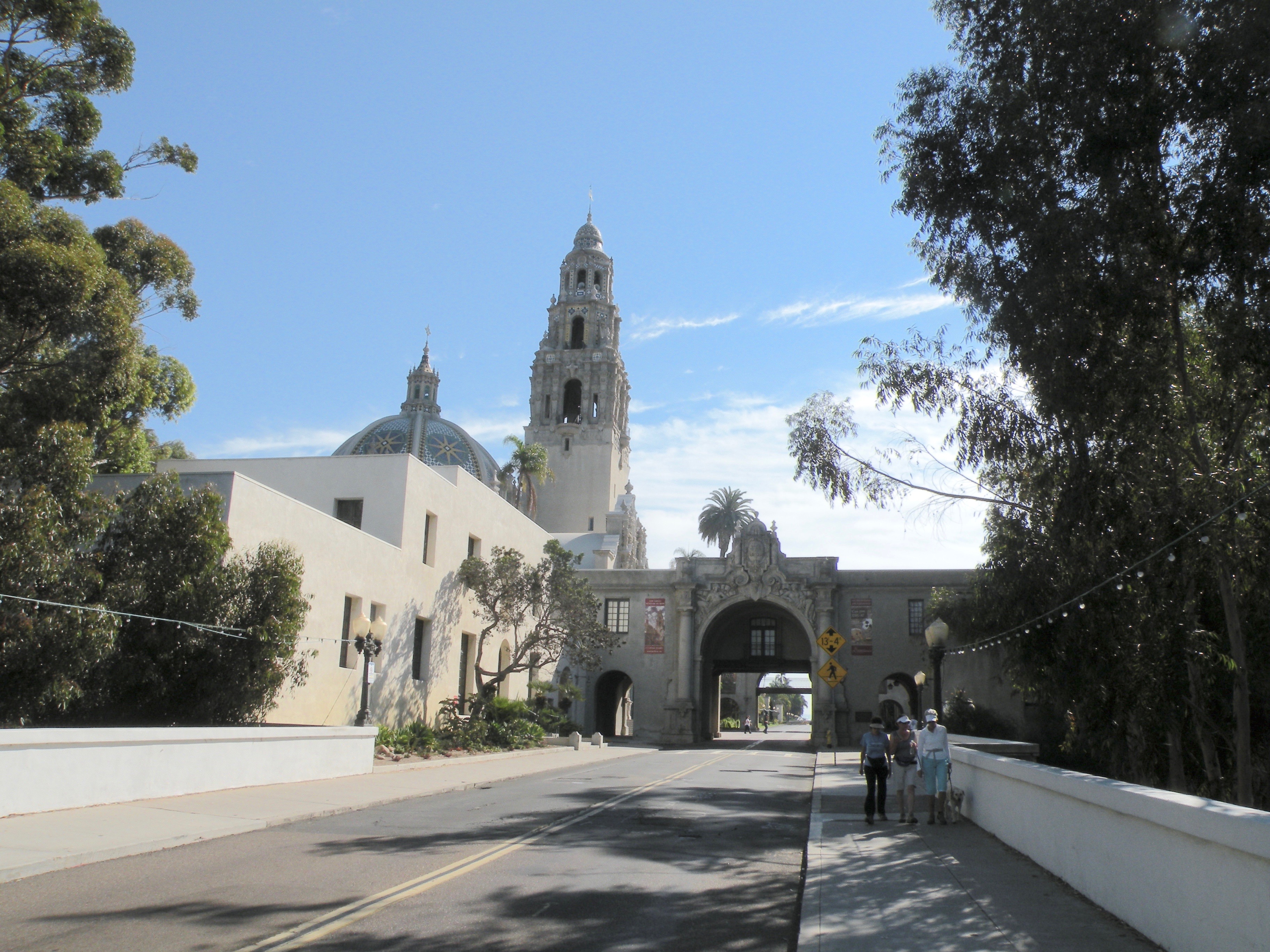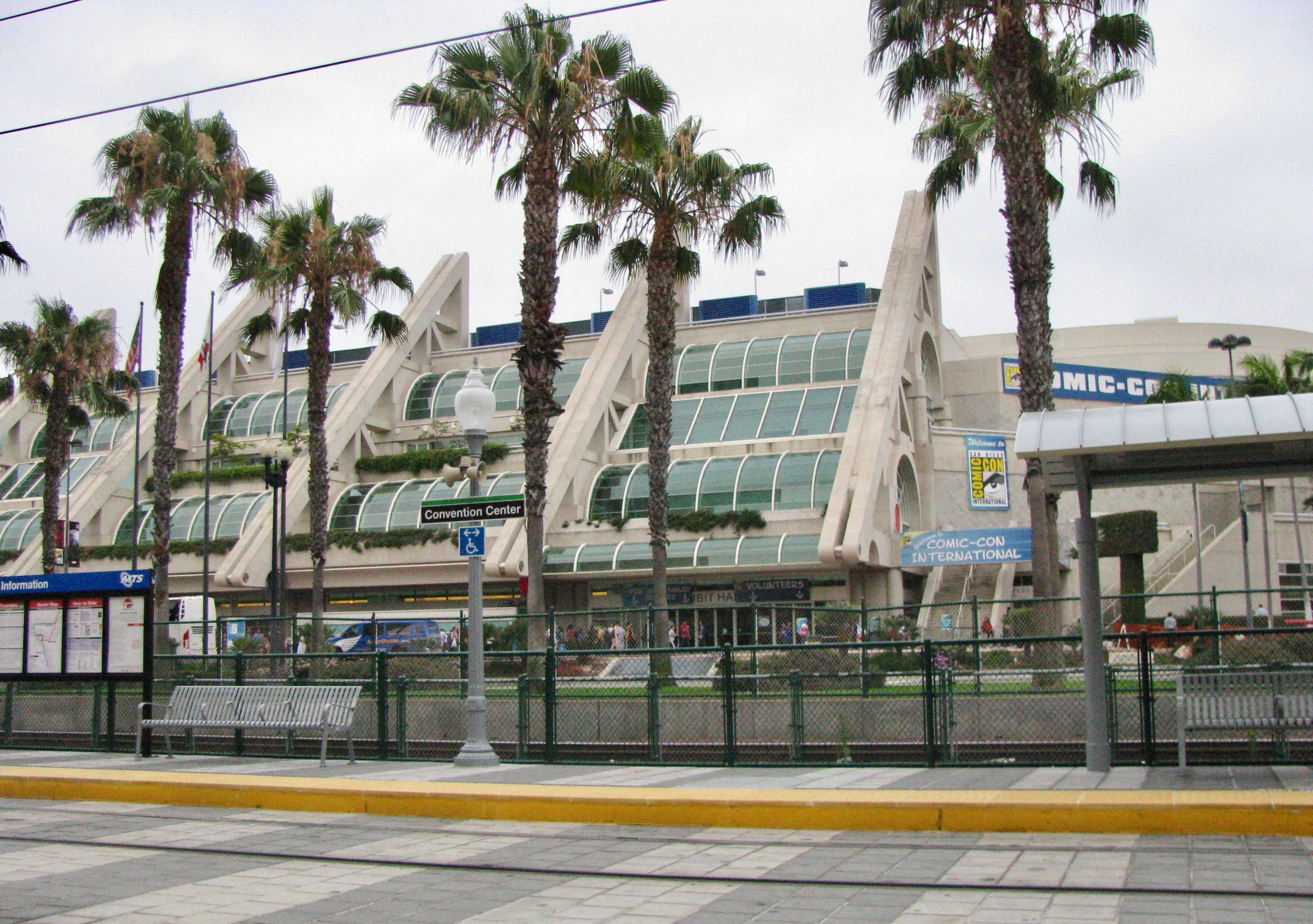Daily Business Report-April 22, 2019
San Diego Convention Center (Courtesy San Diego Convention Center Corporation)
San Diego Startup Week Comes to
the San Diego Convention Center
The annual San Diego Startup Week has a new home this year — the San Diego Convention Center. Tickets for the event, set for May 28 through June 2, are now on sale.
Attendance runs the gamut, from entrepreneurs, developers, designers and students to community leaders and civic supporters.
“Once a year, Startup Week brings together the community to share progress, exchange resources, and celebrate our region’s thriving innovation ecosystem,” said Jarrod Russell, Startup San Diego’s executive director.
There are four content tracks:
• Idea Track is for anyone who has an idea for a startup, wants to join a startup or recently launched a startup.
• Seed Track is for startups looking to achieve product-market fit and solidify a business model.
• Growth Track is for startups ready to grow smart and fast.
• San Diego Track is for attendees interested in learning about what makes the San Diego startup ecosystem unique.
Topics across the tracks include early product development, how to scale, the local software development community, cybersecurity, biotech, cleantech and the craft beer sector.
The Convention Center will serve as the place for meetings, discussions, demos and educational panels. At night, there are parties, keynotes, startup crawls and other networking events to build community. The event is organized by Startup San Diego, a California nonprofit that is run by a volunteer-based group of innovators, entrepreneurs, mentors and investors.
Click here for more, and a schedule of events.
_____________________

The Plaza de Panama Project
for Balboa Park is officially dead
By Lisa Halverstadt | Voice of San Diego
The Plaza de Panama project is officially dead.
Philanthropists have formally backed away from the controversial plan to make over Balboa Park’s central mesa following a last-ditch scramble to revive it.
Qualcomm cofounder Irwin Jacobs, who has for years championed the Plaza de Panama project, said that the Plaza de Panama Committee notified the city on Thursday that it is ending its public-private agreement.
The committee’s decision to abandon its more than seven-year campaign to clear cars from the park’s center comes a week after City Councilman Chris Ward told the group he wouldn’t support a scaled-back version of the project that Jacobs and others had cobbled to try to keep it alive.
“I’m sorry it’s not going to get done,” Jacobs said. “I think it would be a fantastic addition to the city and to the park.”
The Plaza de Panama Committee’s decision to halt its efforts follows a series of disappointments and setbacks and is likely to inspire discussions about the future of philanthropic investments in a crumbling park with a long list of needs.
Legal challenges for years stalled the Plaza de Panama project following the City Council’s initial approval of it in 2012. Then, after Jacobs and Mayor Kevin Faulconer’s pushed to revive the project in 2016, another set of legal challenges emerged over the project’s new financing and development plans.
But Faulconer and the Plaza de Panama Committee were bullish last fall as lawsuits played out in court. They took steps to proceed even amid the legal clouds, requesting bids from construction companies they thought might break ground this year.
When each construction bid for the project came in at least $20 million higher than earlier estimates for the project, the Plaza de Panama Committee debated next steps. Jacobs and the Plaza de Panama Committee ultimately decided in February to put their plans on hold and halt fundraising efforts.
But philanthropists still quietly tried to make the project work. They explored a phased approach that included the controversial Cabrillo Bridge bypass bridge and parking garage but delayed some elements that would add to the price tag.
With those tweaks, Jacobs said, philanthropists thought the project could come in under the city’s roughly $80 million estimate, which included $60 million for construction.
“What we envisioned was having a public-private agreement to do what I’ll call stage one of the project, which is everything except for refinishing the roads and plazas and adding some of the final landscaping but you basically would end up with everything,” Jacobs said.
After doing that work, Jacobs said the committee decided it needed to gauge Ward’s commitment. They had gotten hints that he might not be supportive – and they needed him.
Former District 3 City Councilman Todd Gloria was a crucial advocate for the Plaza de Panama project when it was first approved in 2012 and again when it was returned in 2016.
Now, with new faces on the City Council, the Plaza de Panama project would need Ward’s support to resurrect the Plaza de Panama project.
So Jacobs, Air & Space Museum CEO Jim Kidrick and Legler Benbough Foundation President Peter Ellsworth sat down with Ward last Tuesday at City Hall and pitched the scaled-back version of the project.
Ward wasn’t won over.
He predicted the updated project would require another lengthy environmental review process, another City Council vote and years of additional effort.
Ward, who represents the area and has hosted a series of public meetings about Balboa Park needs and priorities, feared the updated project could for years consume resources and discussions that he believed should instead be focused on more urgent infrastructure upgrades and repairs.
“It didn’t seem like that would be a fiscally responsible or appropriate way to go forward for public benefits we should be achieving for Balboa Park,” Ward told Voice of San Diego.
Instead, Ward said, he’d like the city to focus on a holistic plan for Balboa Park and its needs.
Ward’s reaction startled Jacobs.
“I was surprised,” Jacobs said. “I would have thought that somebody representing the park would have been very excited about this improvement going forward, which I believe would have encouraged other improvements also, but that wasn’t his approach. So be it.”
Ward said that while he appreciates the years of effort that philanthropists put into the Balboa Park overhaul, he couldn’t stand by the project.
“I think that given the state of how things have evolved over the last seven years, it no longer makes financial or logistical sense to be able to achieve that end,” Ward said.
The next day, Jacobs said, the Plaza de Panama Committee voted to end its agreement with the city. The group waited another day to see if anything might change. It didn’t.
A week later, the committee formally ended its agreement with the city, which included a pledge to raise at least $30 million for its share of the project.
Now Ward said he is hoping the city will focus on other Balboa Park projects and upgrades – and a broader plan for the park.
Indeed, Faulconer last year allocated $10 million to the Plaza de Panama project that could instead be applied to other priorities.
Christina Chadwick, a spokeswoman for Faulconer, said Thursday the mayor plans to ensure those dollars are invested in the park.
“There are many parts of Balboa Park that need attention and investment,” Chadwick wrote in an email. “The mayor is committed to ensuring funds allocated for Balboa Park stay in Balboa Park.”
The mayor has previously said that he appreciates the Plaza de Panama Committee’s years-long effort to try to pursue the central mesa project.
It’s not clear whether Ward or other city leaders might seek philanthropic support for additional upgrades.
Former San Diego Foundation CEO Bob Kelly teamed with other community leaders years ago to push for the Balboa Park Conservancy, a group that community leaders had hoped could draw more donations to parkwide needs rather than individual institutions.
Kelly, who is a VOSD board member, questioned whether the Plaza de Panama Committee’s struggles could have a chilling effect on other philanthropic or public-private partnerships in Balboa Park.
“Why would anyone else want to work with the city, get an agreement, knowing that most of these projects take a long time and they are complicated, that at some point in time the rug will be pulled out from under them?” Kelly said.
Kelly saw the project as an opportunity for the city to engage philanthropists and local foundations, and to open the door to more major donations to the park.
Former Balboa Park Committee chair Vicki Granowitz, now a city planning commissioner who also rallied behind the conservancy early on, said the city and Balboa Park supporters can pave the way for more successful public-private partnerships and major park investments by taking Ward’s suggestion to establish a list of Balboa Park priorities.
“Philanthropists should have options to choose from that have already been vetted,” Granowitz said. “What happened to Irwin Jacobs should never happen again.”
Bruce Coons of Save Our Heritage Organisation, a preservation group that repeatedly fought the Plaza de Panama project in court, said he believes future fights with philanthropists could be avoided if needs in the park are better established and those projects get substantial public input early in the process.
“I think the future for Balboa Park – as long as the public and users are engaged – is great. Now this project that wasn’t needed is gone,” Coons said. “We can concentrate on what is needed for the park.”
For now, Jacobs said, he plans to focus his philanthropic efforts on Balboa Park institutions and other causes rather than the park itself. He’s weary after years of heated discussions and roadblocks on the Plaza de Panama project.
“We tried very hard,” Jacobs said.
(Disclosure: Irwin Jacobs is a major donor to Voice of San Diego.)
_____________________
San Diego County jobless
rate in March up slightly
The unemployment rate in San Diego County was 3.7 percent in March 2019, up from a revised 3.5 percent in February 2019, and above the year-ago estimate of 3.4 percent, according to the state Employment Development Department.This compares with an unadjusted unemployment rate of 4.6 percent for California and 3.9 percent for the nation during the same period.
Between February 2019 and March 2019, total nonfarm employment increased from
1,489,700 to 1,494,000, adding 4,300 jobs. Total farm employment added 200 jobs.
Government led the month-over employment growth, adding 1,700 jobs. The gains were mainly concentrated in local government (up 1,400 jobs), followed by state government (up 500 jobs). Over the month, the total number of jobs in federal government decreased by 200.
Leisure and hospitality recorded an increase of 1,600, with over 80 percent of the employment boost concentrated in arts, entertainment, and recreation (up 1,300 jobs). Accommodation and food services contributed to the month-over expansion with 300 jobs.
Educational and health services (up 1,500 jobs), other services (up 900 jobs), professional and business services (up 800 jobs), and manufacturing (up 400 jobs) logged increases over the month. Mining and logging and financial activities remained unchanged.
Construction (down 1,300 jobs), trade, transportation, and utilities (down 1,200 jobs), and information (down 100 jobs) registered declines from the previous month.
Between March 2018 and March 2019, total nonfarm employment increased from
1,473,900 to 1,494,000, adding 20,100 jobs. Total farm employment decreased by 500, from
9,200 to 8,700.
Educational and health services led the year-over gains, adding 7,700 jobs. The upswing was noted on both industry employment sectors, health care and social assistance (up 4,500 jobs) and educational services (up 3,200 jobs).
Employment advanced by 4,700 in professional and business services, 4,000 in government, 3,000 in leisure and hospitality, 3,000 in manufacturing, and 2,100 in other services over the year.
Trade, transportation, and utilities (down 2,800 jobs) registered the largest decrease over the year. Retail trade recorded a decline of 3,200 jobs over the year, followed by cutbacks in wholesale trade (down 300 jobs). Transportation and warehousing (up 700 jobs) helped offset the total. Utilities remained unchanged.
Construction (down 1,100 jobs), information (down 400 jobs), and financial activities (down 100 jobs) recorded cutbacks over the year. Mining and logging remained unchanged over the year.

